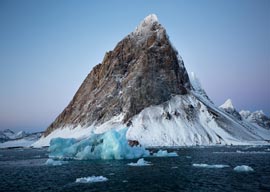
April 14, 2015

Source: Shutterstock
In journalism, “trend pieces” are like the weather: Everyone complains about them “ and there”ll be a new one around any minute. (One probably written by some low-level reporter who was just moaning about how hacky the damn things are.)
You know the sort of article I mean, even if you aren”t a scribbler by trade, because you”ve read hundreds of them:
“The basic formula has long carried reporters and readers alike through lazy vacation months: colorful quotations from a number (specifically, three) of the trendsetters; a blurb or two from academic experts; some vaguely thesis-related statistics; a reference to the broader zeitgeist.”
Ah yes, that “Rule of Threes,” a.k.a, “Three’s a trend.” It’s the closest most journalists ever (want to) get to math, and it’s often the key to getting an editor to greenlight a pitch, however tasteless or absurd.
For what it’s worth, the writer of this National Post piece about “the emergence of a new [literary] genre” “ “the climate change memoir” “ could only cook up two examples. Let’s hope this indicates that this non-fiction “trend” is as fictional as the metrological phenomenon that inspired it: global warming, or as I call it, the Loch Ness Monster of weather.
Sadly, I see that another, long-maligned publishing trend is still stubbornly refusing to die:
Both books are saddled with those breathlessly long, pseudo-clever yet instantly forgettable titles in need of emergency colectomies, stat.
“¨The Right to Be Cold: One Woman’s Story of Protecting Her Culture, the Arctic and the Whole Planet, is by Sheila Watt-Cloutier, and it pains me to say that it sounds almost not entirely awful.
The author (some sort of “activist”) started out life as “Sheila E8-352″ “ a Canadian government moniker of the sort assigned to Nunavut residents during a less sensitive era “ and ended up with her face on a stamp in 2012.
It would qualify as a bootstrappy success story, except we Canadians don”t generally approve of such sagas “ or make them easy to pull off: you”ll notice that “ from Indian Affairs to Canada Post “ our author’s woes and triumphs seem to play out beneath the shadow of the leviathan State.
That Watt-Cloutier was co-nominated for the Nobel Peace Prize along with Al Gore isn”t something I”d personally brag about, but it gets us to the message of her book, which is basically “global warming is melting stuff up here and wrecking our way of life.” Said way of life in Nunavut amounting to paying ten times the price for groceries flown up from the part of the country where we actually grow and make stuff, then sitting in the dark half the year getting drunk.
Carrie Saxifrage, who wrote the second book in question “ The Big Swim: Coming Ashore in a World Adrift “ also changed her name in adulthood, but for pretentious, First World white lady reasons:
She and her husband named themselves after a white flower that grows on mountaintops, and, as she recounts, “Our families didn”t know what to make of our earnest explanations of how we were claiming relationship to those pure, high places[.]”
I pray that being “high” had something to do with this couple’s rejected-Portlandia-script name-change. The notion of anyone undertaking such an endeavor stone cold sober chills the blood.
The Big Swim chronicles Saxifrage’s efforts at “sustainable living.” I presume she did not, however, calculate how many trees were chopped down to produce her memoir, or her computer’s “carbon footprint”…